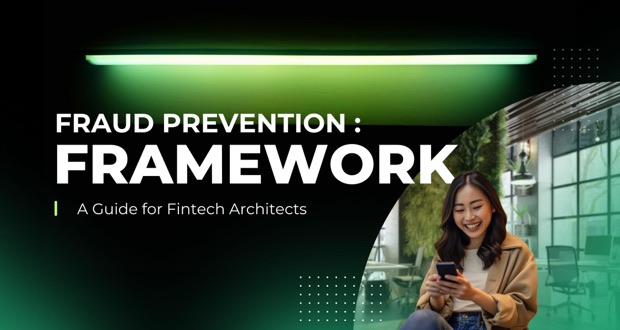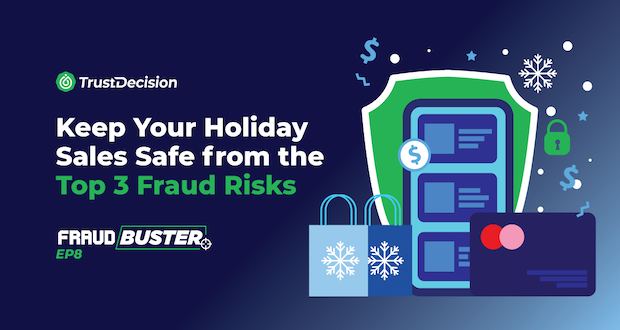The Rising Tide of Payment Fraud
Cybercriminals have adapted, becoming more sophisticated in employing phishing and identity theft tactics. Furthermore, thanks to Artificial Intelligence (AI), the fraud landscape has transformed into a dynamic and ever-evolving challenge.
The APAC region, in particular, has witnessed a surge in these incidents, posing a growing concern.
Several factors, like the rapid growth of fintech, diverse payment methods, and cross-border transactions, have made it a target.
Fraud and scam is a global issue, posing a threat to both individuals and financial institutions. The impacts range from increased financial losses to damage to business reputation, loss of customer trust, and potential legal repercussions.
Fraudulent Characteristics
Fraudulent activities exhibit various telltale signs, including the use of fake or false information, such as bulk registration, fake accounts, account farming, the circumvention of facial recognition for identity impersonation, bypassing liveness detection, and even exploiting hacked personal laptops for facial data.
Device-related risks further complicate the landscape, involving tactics like
- Acquiring a large number of cheap or second-hand phones
- Implementing a unified security management system
- Frequently switching SIM cards, deploying modem pool
- Establishing war rooms
- Creating a larger scale modem room
- Using modem pool for SMS receipt, performing mass account registration
- Use device management systems and automation tools for nurturing or farming accounts
Key Pillars of a Fraud Prevention Framework
Creating a robust fraud prevention framework is essential. A comprehensive fraud prevention framework is a multifaceted approach that can be likened to a fortified fortress guarding against payment fraud in the fintech industry.
.png)
To fully grasp the inner workings of this framework, it's essential to delve deeper into its key pillars, including the Fraud Detection and Monitoring System and the Big Data Modeling Platform and the Risk Decision Engine, as well as its integral components, such as Preventive, Facts, Predictive, and Probabilities.
Each of these elements plays a pivotal role in safeguarding your fintech ecosystem and ensuring its security.
#1: Fraud Detection & Monitoring System
The foundation of a fraud prevention framework is built on the backbone of a user journey: Onboarding → Login → Transacting → Monitoring.
Key solutions include:
- Robust User Authentication: The primary line of defense.
- Continuous Behavior Monitoring: Staying vigilant in real-time.
- Transaction Analysis and Monitoring: Proactive identification of anomalies.
- Post-Transaction Response: Empowering users to report fraud.
- Biometric Authentication: The future of secure identity verification.
- Behavioral Analytics: Detecting unusual patterns and deviations.
- Real-time Transaction Monitoring: Halting fraudulent transactions in their tracks.
- User-Centric Reporting: Simplifying the reporting process for users.
.png)
Leveraging advanced techniques, including KYC verification, device fingerprinting, anomaly detection, and behavioral analysis, allows organizations to effectively thwart fraudulent activities while optimizing cost efficiency and risk mitigation.
This comprehensive strategy fosters a secure and trustworthy environment that safeguards the interests of users and financial integrity.
Embracing such a robust fraud prevention system empowers businesses to proactively address constantly evolving threats, enhancing their reputation and promoting continuous growth in the digital landscape.
#2: Big Data Modelling Platform & Risk Decision Engine
A robust foundation is just the beginning. The second core pillar of the framework revolves around addressing the integration challenge, where disparate components must work together seamlessly.
Advantages of Big Data Modelling Platform
- Data Processing and Analysis: Big Data Modelling Platforms can handle vast volumes of data, both structured and unstructured. This is crucial in the fintech sector, where data comes from various sources, such as user profiles, transaction histories, external threat feeds, and more. Processing and analyzing this data can uncover valuable insights that help identify patterns and anomalies indicative of fraudulent activities. It's the foundation for data-driven decision-making.
- Early Detection: One of the primary benefits is early fraud detection. By analyzing historical and real-time data, the platform can identify unusual activities or deviations from established patterns. This early warning system helps prevent fraud before it can cause significant damage. Studies have shown that early detection can significantly reduce financial losses due to fraud.
- Scalability: Fintech businesses typically handle an increasing amount of data as they grow. A Big Data Modelling Platform can scale to accommodate this growth, ensuring that data analysis remains efficient and accurate as the business expands.
- Adaptability: Fraudsters are continually evolving their tactics. The platform's adaptability is essential to stay ahead of emerging threats. It can adjust its algorithms and models to recognize new patterns of fraudulent behavior, keeping the fintech ecosystem protected.
Advantages of Risk Decision Engine
- Risk Assessment: The Risk Decision Engine plays a vital role in fraud prevention. By evaluating the risk associated with applicants, it identifies potentially high-risk individuals or businesses, crucial in spotting fraudulent activities. Its risk assessment capabilities substantially reduce the risk of offering financial services to fraudsters.
- Automated Decision-Making: The engine's automation is invaluable in reducing manual errors and biases that might arise in the decision-making process. Automated decisions ensure consistency and accuracy, which are critical in fraud prevention. Speed is also of the essence; the faster a decision can be made, the sooner potential fraud can be identified and stopped.
- Efficiency: The Credit Decision Engine streamlines the lending process. It's important for fintechs to provide efficient services, and this efficiency can have the added benefit of reducing the time available for fraudsters to operate. Studies show that automated decision engines can cut underwriting time significantly.
- Data Utilization: The engine relies on a range of data sources, including credit data and transaction history. By examining these data points, it identifies trends and patterns that can be indicative of fraudulent applications. This ability to use data for fraud detection enhances the overall security of the fintech platform.
The Role of Emerging Technologies
The fintech industry's insatiable appetite for innovation extends to the realm of fraud prevention. The adoption of emerging technologies plays a pivotal role in bolstering security measures.
Let's explore some of these key elements:
1. Artificial Intelligence and Machine Learning: Powering Predictive Fraud Prevention
Artificial Intelligence (AI) and Machine Learning (ML) are the driving forces behind predictive fraud prevention. These technologies excel in analyzing vast datasets at incredible speeds, making them adept at identifying complex patterns that might go unnoticed by traditional rule-based systems.
AI and ML enhance your framework's ability to predict and prevent fraud. By flagging transactions with unusual amounts, frequencies, or geographic locations, these technologies trigger immediate alerts for further investigation. They add a layer of intelligence to your security measures, enabling your fintech platform to stay one step ahead of fraudsters.
2. Quantum Cryptography: The Unbreakable Encryption for Secure Transactions
Quantum cryptography represents the pinnacle of encryption technology. It leverages the principles of quantum mechanics to create practically unbreakable encryption keys. Quantum-encrypted transactions are impervious to decryption by even the most advanced supercomputers.
Integrating quantum cryptography into your framework ensures that transaction security reaches unprecedented levels. It's a formidable defense against potential breach attempts, offering users virtually impenetrable security.
3. IoT and Fraud Prevention: A Connected Defense Strategy
The Internet of Things (IoT) influences fraud prevention by creating a connected defense strategy. IoT devices can provide valuable insights into user behavior and transaction patterns. For example, smart wearables and devices can serve as secondary authentication factors, adding an extra layer of security.
By harnessing IoT devices, your fintech platform strengthens its security measures and creates a holistic defense strategy encompassing user- and device-centric factors. This connected approach enhances the overall security of your framework.
These key components and emerging technologies harmonize to create a robust fraud prevention framework.
Together, they ensure that your fintech ecosystem remains secure, proactive in its defense, and ahead of the curve in the ongoing battle against payment fraud.
Designing a Customized Framework
In the dynamic realm of fintech, a one-size-fits-all approach to anti-fraud security architecture falls short of providing comprehensive protection.
While a typical anti-fraud security architecture serves as a strong starting point, adaptability is vital in crafting a customized framework that caters to fintech's unique risks and ever-evolving landscape.
1. Assessing Fintech-Specific Risks: Tailoring the Framework to Industry Nuances
A crucial facet of designing a customized fraud prevention framework for fintech is the recognition of industry-specific risks.
Fintech spans a diverse spectrum, from digital lending platforms to B2B payment gateways, and each segment brings its own set of unique vulnerabilities.
The first step to tailor your framework effectively involves assessing these fintech-specific risks. It entails a deep dive into the intricacies of your fintech enterprise's particular sector.
For example, digital lending platforms may encounter a higher risk of identity theft and loan fraud, while B2B payment gateways could be susceptible to business transaction fraud.
Understanding these nuances allows you to create targeted defenses that address your fintech business's precise threats.
2. Scalability and Future-Proofing: Adapting to Evolving Threats and Technologies
Fintech is synonymous with innovation, and the industry continually witnesses the emergence of new technologies and methodologies. Your fraud prevention framework must be designed for scalability and future-proofing to stay ahead of the curve.
Scalability involves constructing a framework that can seamlessly expand and adapt as your fintech business grows. Whether onboarding thousands of new users or processing an increased volume of transactions, your framework should effortlessly accommodate these changes without compromising security.
Additionally, future-proofing is vital for ensuring that your framework remains effective against evolving threats and technologies.
By integrating the ability to swiftly adopt emerging security measures and technologies, such as quantum cryptography or behavioral biometrics, your framework remains resilient and prepared for the unexpected.
3. Collaboration and Industry Best Practices: Learning from Collective Experiences
In the ever-evolving landscape of fintech, the ability to collaborate and learn from the collective experiences of industry peers is invaluable.
Building a customized framework does not mean reinventing the wheel entirely. Rather, it's about identifying industry best practices and tapping into the wealth of knowledge available.
Collaboration with industry partners and participation in fintech security communities can provide insights into successful strategies and approaches.
By learning from collective experiences and adopting proven practices, your customized framework benefits from the collective wisdom of the fintech community.
The art of designing a customized fraud prevention framework in the fintech realm is a delicate balance of recognizing industry-specific risks, ensuring scalability and future-proofing, and leveraging the collective experiences of your peers.
With this customized approach, you're well-prepared to navigate the ever-shifting landscape of fintech and secure your business against various threats.
Implementation Challenges and Solutions
Balancing security with a seamless user experience while maximizing ROI is vital for fintech engineers and solution architects.
However, challenges exist on the path to achieving this delicate equilibrium.
Maintaining an in-house anti-fraud team can be costly, as it entails expenses related to hiring specialized professionals and continually investing in their training and development.
Maximizing ROI while retaining the balance between security and the user experience can be challenging, but it's essential for the long-term sustainability of a fintech venture. It involves making strategic investments in technologies and processes that simultaneously enhance security and streamline user interactions.
Navigating the legal landscape and staying cost-effective are key challenges, but solutions exist. By leveraging legal expertise or compliance tools tailored to fintech, companies can ensure adherence to data privacy and fintech regulations without incurring excessive costs.
Keeping up with data privacy and fintech regulations can be daunting due to their dynamic nature. The evolving legal requirements and industry standards necessitate ongoing vigilance and adaptation. Yet, fintech companies can stay ahead by regularly reviewing and updating their compliance strategies, ensuring their frameworks remain aligned with the latest regulations.
By integrating technologies like biometric authentication, behavioral analytics, and real-time transaction monitoring, you can enhance security without compromising user experience. These advanced technologies empower fintech platforms to proactively detect and prevent fraud while minimizing friction for legitimate users. Biometric authentication provides a seamless yet robust method of user verification, behavioral analytics identifies suspicious patterns with minimal disruption, and real-time transaction monitoring swiftly halts fraudulent activities.
Conclusion: The Resilient Fraud Prevention Framework
The fintech industry's growth offers opportunities and challenges. Payment fraud is a significant threat, but with the right technology, tools, and a well-crafted framework, you can protect your systems and users effectively.
It's a responsibility that falls upon the shoulders of fintech engineers and solution architects, who must assume the mantle of safeguarding the industry's future.
By constructing a resilient fraud prevention framework, you secure your fintech venture and position yourself at the forefront of the rapidly evolving fintech landscape.
Ready to explore how TrustDecision can empower your journey toward a secure fintech ecosystem? Access our invaluable resources and downloads on GitHub here: GitHub Downloads.
It's time to embrace the future of fintech security. Get started today.














